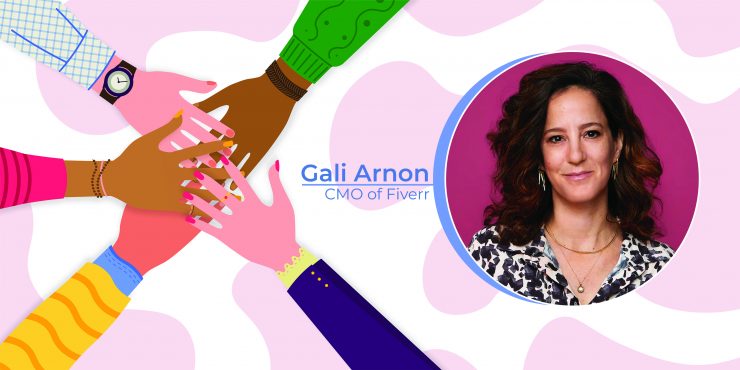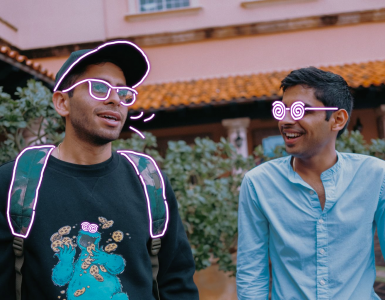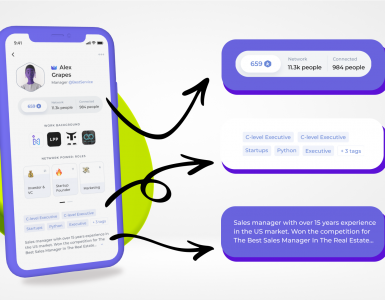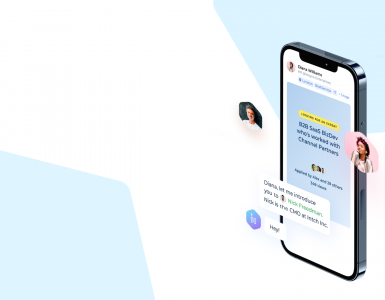We keep sharing the highlights from Web Summit 2022 – one of the largest events in tech that brought together over 70,000 people in Lisbon. Next up – our takeaways from the keynote speech of Gali Arnon, CMO of Fiverr, one of the largest platforms for freelancers. In her speech, Gali shared her thoughts on how marketing has changed in the past 20+ years – and how anyone in marketing can learn how to move forward.
About 20 years ago, marketing was very straightforward, and it was mostly broadcasted via television. Most families gathered around their TV sets and watched the same shows during prime time. The commercials shown during those slots cost a fortune, got the most views and the creativity of those ads was measured by panels of experts at festivals like Cannes Lions. But since then, many things have changed – and marketing teams have to take these changes into consideration to stay relevant and move forward.
According to Gali, there were 5 significant shifts that every marketing team needs to be aware of:
No more “one screen” approach
Instead of watching content that is streamed on TV with a “top-down” approach, we now have a variety of information channels and devices to choose from. Social media, news outlets, streaming platforms – the production of content is increasing, while we all still have only 24 hours in a day. More than that, consumers don’t only watch content – they also create it. So, brands are not only competing with other brands for attention in social media feeds – they are also competing with friends, family and loved ones. Tough competition, right?
Consumers are very picky about what to spend their time on – and if they don’t like something, they will be vocal about it. Brands used to be unreachable behind the TV screens but the “Reply” button has changed the rules of the game. Now the consumers decide whether or not something is funny, creative or popular – the power has shifted and is now in the hands of the community. This means that brands will have to listen closely to their audience to stay relevant.
Gen Z are the new consumers
Gen Z, the most controversial of all generations, is the fastest growing in terms of economic power. So, if they’re not your target audience right now – chances are they will be in just a few years, and if you’re in marketing, you need to know what motivates them.

In terms of motivation to buy something, Generation Z (people born between 1996 to 2010) are very different from baby boomers and even millennials. Here are some traits of their economic behavior:
- Gen Z, or Zoomers, are 67% likely to block ads to save their time – good luck getting through those ad blockers!
- Gen Z are very picky with the choices they make. They research brands carefully and they are 55% likely to purchase something from an ethical brand or brand with a cause. And, in case the brand cannot support their stand or is using techniques like greenwashing or femvertising in an unethical way, Gen Z will be the first crowd to cancel the brand, which can have disastrous consequences.
- Zoomers tend to shop around and purchase things from many brands, but if they find something they like, they tend to stick to it. Surprisingly, Generation Z are loyal consumers who will back up their favorite brand (as long as the brand is able to keep their marketing promises).
So, when marketing to such a picky and powerful audience, brands have to be very honest and open. Otherwise, they will be ignored, or worse – canceled.
Creativity has been democratized
Like we said earlier, the creativity of ads used to be evaluated by jury panels at festivals. And let’s be honest – those panels consisted mainly of men wearing suites. Well, not anymore. Now, the creativity of ads is measured by metrics that are open to everyone. Likes, views, and shares are the new measures of how well the ad was received. The campaign is creative, but has it gone viral? If yes, it is successful. If not – it may have gone unnoticed. The audience gets to decide what is successful and what’s not – which means the brand needs to capture the attention and make their users hit that “share” button.
Creators are the new actors
Celebrities used to be the driving force behind ads. Hollywood stars, athletes, and singers used to be paid millions of dollars for ads that would capture everyone’s attention. And while that’s still often the case, the economy has shifted to advertising in smaller channels via influencers.

Studies state that the most powerful ads come from influencers with less than 1000 followers.They get the most likes and views because ads from them seem more genuine. Brands know that and capitalize on that approach. Instead of paying millions of dollars to one celebrity, brands would rather split the budget between several hundred micro and nano influencers and get better results, which is backed up by numbers. According to HootSuite, 61% of people are more likely to trust an ad coming from an influencer they follow – and are more likely to try the product. Impressive, right?
Brands need social agenda
The world is a much less peaceful place than it was a few decades ago. Now the world is constantly shaken by the news cycle, from the pandemic to global economic crisis, global warming and war around the world. Brands can no longer stay silent about everything – on most sensitive subjects, they are required to take a stand.
Whether it’s support of Black Lives Matter or support of the LGBTQIA+ community, brands are being called on by their customers to show their support. And every stand comes at a price. For instance, Diesel released a fashion collection inspired by Pride month to support the LGBTQIA+ community. The next morning the branding team woke up and realized that they lost 14k followers on social media. What did they do? They celebrated it.

Fiverr is no exception. After the war between Russia and Ukraine started, Fiverr was called on to close their operations in Russia – but it also meant that the freelancers from Russia would lose the opportunity to work. Fiverr had to do that to take a public stand. When faced with a complicated ethical decision, brands are expected to take a stand in favor of their community, and sometimes this means losing a part of the audience but retaining the most loyal customers.
Overall, the power has shifted from creative agencies and marketing boards to the community. We moved from the “top-down” approach to a more democratized model, where the people decide what they wish to see (and buy) and brands have to listen closely to stay relevant. Feedback should be at the core of each marketing campaign and instead of crafting alluring brand promises, companies have to have an honest conversation with their audience. It may be the hard way, but that’s the only way that works these days.
Want to know more about marketing in the new age, promoting your business or building a startup? Read the new articles on our blog every single week!








The key question is how to define what brand’s community is? And who belongs to it?
Let’s say Community of Notion or Community of Adidas? Who are they?
That’s very true – it’s all about views and likes now, we decide what’s hot and what’s not
Cool case about Diesel – that’s a bold move but it did pay off
I think it’s not always fair to ask brands to take a stand on EVERYTHING – after all, they just want to sell their product. But it is nice to know that you’re on the same page with the people you purchase from
I wonder if this change happened in 20 years – what’s next. Web 3.0?